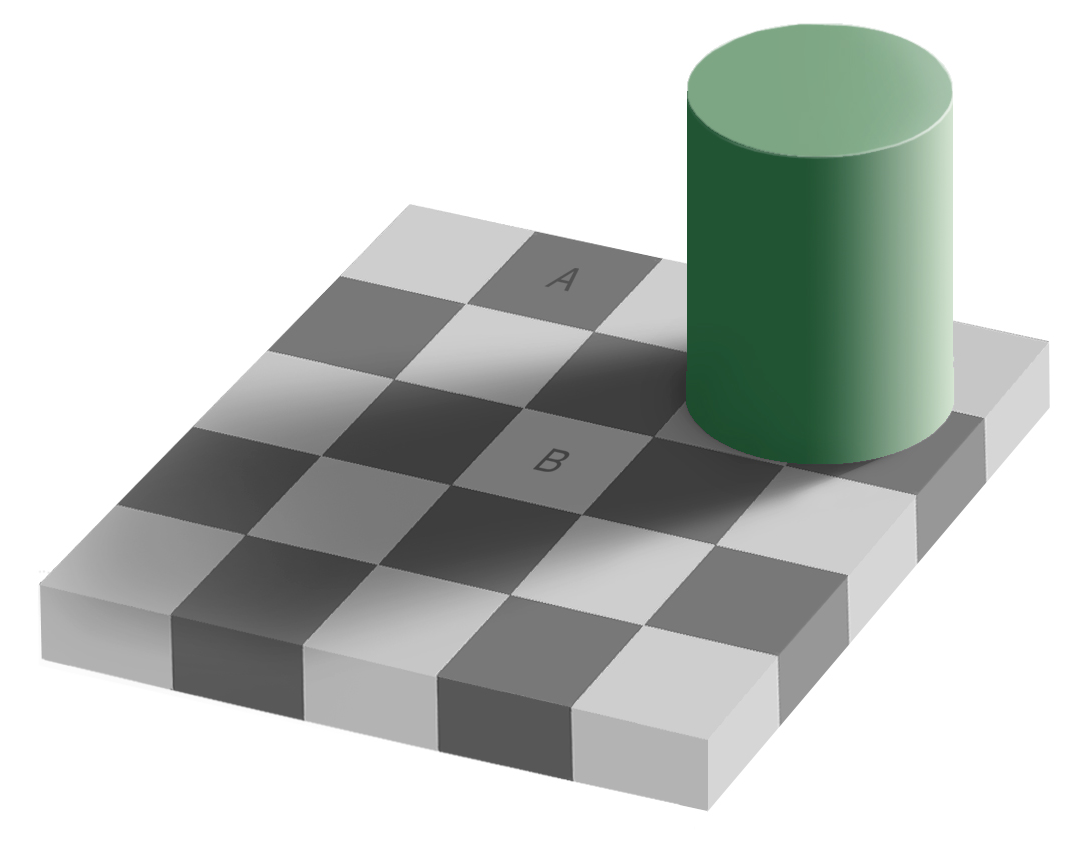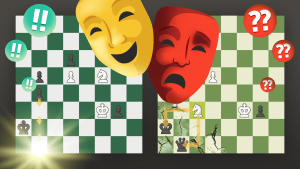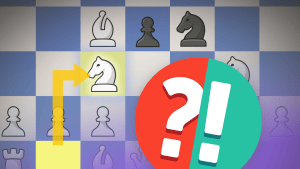
The Amazing Chess Illusion
Most people are fascinated by optical illusions. Indeed it is a very strange feeling that what you see with your own eyes is not exactly what it is.
This reminds me of the punchline to the old joke that I already mentioned in this article: "who are you going to trust, me or your lying eyes?"
What can be more exciting than an optical illusion? Only an optical illusion on a chess board! I bet many of you have seen the next one, which you can find on Wikipedia:
Square A is exactly the same shade of grey as square B.
Today we'll talk about a certain optical illusion on a chess board that occurs during the game.
The most famous case of this illusion happened in the Soviet championship of 1937. The tournament took place in Tbilisi, which was the capital of Soviet Georgia.
In this famed game, the local hero (the master Archil Ebralidze) was playing one of the best Soviet players GM Viacheslav Ragozin (yes, the guy who had a popular opening variation named after him).
After Ragozin played 40...Rc7?? the spectators gasped since no one could understand what was going on. They called the boy who was moving the pieces on the giant demo board, but he confirmed that it was exact the position of the game.
Slowly it became clear that GM Ragozin decided to get rid of the annoying Rd7 using a cute little combination. If White takes the rook, he would immediately take it back with a fork: 41. Rxc7 Bd6+ followed by 42...Bxc7.
There was just one little problem. Really small one. Almost nothing. The bishop was pinned!! Therefore White could simply capture the free rook and Black would resign instantly!
Meanwhile Ebralidze was thinking about his move. After about 15 minutes, the impatient spectators started whispering "Archil, take the rook!" but it looked like Ebralidze didn't hear them.
At some point one guy from the audience yelled "Archil, take the @#$% rook!"
Ebralidze couldn't tolerate such ignorant behavior anymore, so he turned to the spectators and said "I see everything, you patzers!" -- implying that he saw something the audience didn't see: the fork!
After about 20 minutes of thinking, Ebralidze finally played 41.Rd5?? It is impossible to describe what was going on in the audience.
A famous Georgian writer even directly asked Ebralidze why he didn't take the rook. This simple question took Ebralidze out of his trance and he realized what just happened.
The end of the game was even more tragic:
So the Black bishop forked the White rook at the end! Talk about destiny.

The rest of the story is controversial. According to some sources, till the end of his life Archil Ebralidze was getting phone calls in the middle of the night from pranksters asking why he didn't take the rook.
According to other sources, it ended really bad for Ebralidze.
It is an easily verifiable fact that after the outcome of this second round game, the tournament path of both players was dramatically different. Lucky Ragozin came second and hapless Ebralidze finished dead last out of 20 players.
Don't forget that the tournament took place during the Great Purge of 1937. So, according to some rumors, Archil Ebralidze was sent to the gulag for defaming the reputation of people of Soviet Georgia.
Another famous case of an optical illusion on a chess board happened in a semifinal of the next Soviet championship of 1938. The famous Soviet grandmaster Piotr Romanovsky was playing master Genrikh Kasparian.
Master Kasparian was not only a strong chess player but also a very famous chess composer, and this factor unexpectedly ruined the game for him.
In the completely winning position where as they say "all roads lead to Rome," Kasparian found a beautiful, problem-like finish:
When Kasparian was trying to conclude his beautiful combo with 54...Nf3 checkmate, Romanovsky touched the tip of Black's king pointing the pin.
Kasparian resigned immediately.
Fortunately this painful loss didn't have any tragic consequences for Kasparian.
As you've probably already guessed, GM Romanovsky finished the tournament second and qualified to the final of the Soviet championship while poor Kasparian finished 13th out of 18 players.
The most recent case of this optical illusion happened just last month in the senior world championship:
When Black realized that his brilliant simplifying combination has failed due to the simple fact that his knight was pinned and therefore his intended fork 42...Ne4 was illegal, he resigned.
In my opinion illusions are similar to magic and you cannot beat magic 
So, my only advice: when you intend a combination that involves a fork, make sure that your forking piece is not pinned!
RELATED STUDY MATERIAL
- Check out GM Serper's last article: The Four Most Amazing World Championship Blunders
- Watch IM Daniel Rensch's video: 5 Pins You Must Know!
- Take a lesson on pins in the Chess Mentor.
- Avoid chess illusions by practicing with the Tactics Trainer.
- Looking for articles with deeper analysis? Try our magazine: The Master's Bulletin.


